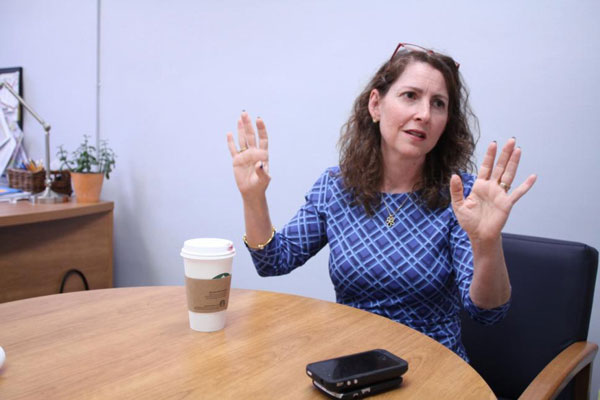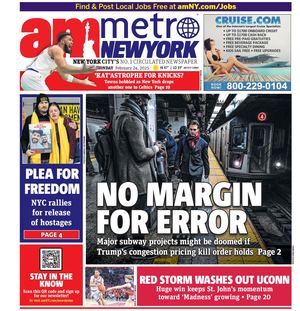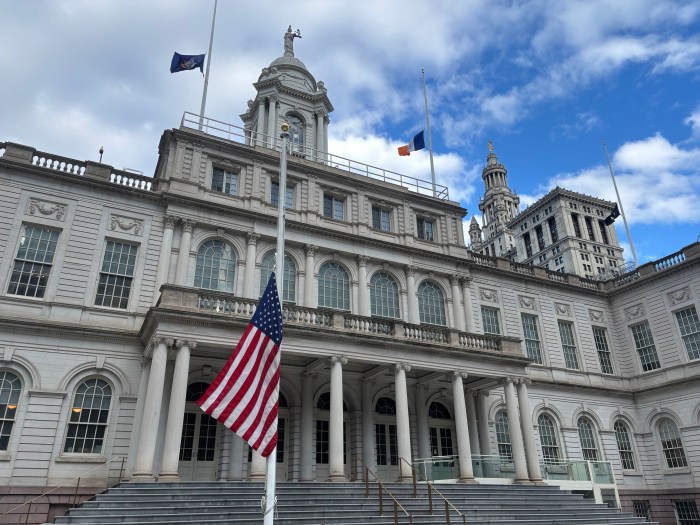
BY TERESA ARBOLEDA | Battles between charter school operators, like Eva Moskowitz, and public school parents and education advocates are nothing new to the mass media. Recently The New York Times ran an article on this topic, featuring Moskowitz and her Success Academy schools. However, too often this kind of media coverage does not accurately portray our side of the story. The SUNY board of trustees recently voted to approve 17 charter applications, 14 of them by Moskowitz, in New York City. It is more important than ever for the public to understand the reality of the charter movement.
We have experienced firsthand the battles between charter operators and the school communities where the Bloomberg administration co-located charter schools. No matter how charter school advocates may want to paint it, the fact is that public schools can neither provide the same kind of support and resources that flow into many of the charter schools from wealthy supporters nor engage in the charters’ practices that weed out difficult-to-educate students. Following are some reasons why public schools parents are fighting the charter movement:
For starters, according to the latest available data, the percentage of students with disabilities ranged from 12.6 percent to 13 percent at Harlem Success Academy 1-3, the percentage of English Language Learners students there ranged from 4.1 percent to 7.1 percent, and the economic-need index averaged .69 percent — far below other nearby district schools. For example, P.S. 149 had nearly double the number of special-needs students compared to the co-located Harlem Success Academy 1 — 20.6 percent compared to 12.6 percent, and more than four times the number of E.L.L. students — 18.9 percent compared to only 4.1 percent.
Of the four Success Academy schools in Harlem, with a total enrollment of 2,540 students, only 17, or 0.6 percent, of these, were special-education students with the highest level of need. In contrast, the average percentage of special-education students with the highest level of need at New York City public elementary/middle schools was 9.4 percent — and 14 percent in Harlem. The average public school in the city serves 15 times the concentration of highest-need special-education students compared to Success Academy charters.
The comptroller should audit Success Academy enrollment, attrition, suspension and expulsion rates.
There are many documented stories of children with special needs pushed out and/or illegally suspended from New York City charter schools, without due process, with suspension rates two to three times that of surrounding district schools. According to the Department of Education discipline code, students in New York City public schools can only be expelled if they are in general education classes, and have turned 17 prior to the start of the school year. Yet the SUNY Charter Institute notes in a renewal document for Harlem Success 2 that the “implementation of the expulsions does not align with stated policy language,” though it did not reveal how many students were expelled.
As to Success Academy suspensions, the Institute writes, “It was unclear that live instruction was consistently provided in accordance with New York’s compulsory education law.” Students expelled from charter schools then go to the public school, placing the burden of educating our most vulnerable students on the public schools with fewer resources.
Success Charters have high overall student attrition rates, according to the state report cards. The seventh grade class at Harlem Success Academy 1 has had a 52.1 percent attrition rate and the sixth grade class has had a 45.2 percent attrition rate since 2006-07. In four years, Harlem Success Academy 4 lost more than 21 percent of its students. We are urging the city comptroller to audit the enrollment, attrition, suspension and expulsion rates at Success charters for each of the at-risk student categories, before this charter chain is allowed to expand.
According to testimony in public hearings, there was no outreach by charter operators to English Language Learners or special-education students. We believe this is a deliberate attempt to exclude these students to maintain the test scores.
Charter school students are self-selecting. Children whose parents are involved tend do well in school. But, for many reasons, too many parents in some communities are not as involved and do not apply to participate in the charter lottery — or worse, are unaware such options exist. While this may be the fairest way to enroll students, it also helps to weed out usually low-performing and hard-to-educate students.
Public hearings in affected school districts are required by law to be held before a charter can be approved. At these hearings, there is almost always a vocal opposition voiced by public school parents and the community, not just the U.F.T. The objections to the application are usually focused on the potential of charter schools draining resources from public schools. No matter the opposition, approval has been preordained with little attention paid to the concerns voiced.
Many charter schools were literally shoved into public school buildings that really did not want another school taking over their gym, library and art room and forcing some kids to have lunch as early as 10 a.m.
The Success charters co-located in public school buildings were painted, cleaned up nicely and received resources, such as computers, supplies, etc., but the rest of the school received little or nothing. While the law provides for the public school also to get whatever the charter gets, schools report that often this does not happen. It was apparent to the public school population that resources were taken away from the many to give to a few.
With the law that passed in April, the city will either have to provide space for charter schools in our already overcrowded school buildings or pay to rent space in private schools. Money is further diverted from needy public schools, which face continual budget cuts from Albany, while charter school administrators pay themselves high six-figure salaries and receive giant donations.
Public school parents and community members made Public Advocate Bill de Blasio aware of these problems and he became involved in trying to have an equitable and fair process to co-locate schools. Candidate de Blasio’s mayoral campaign invoked a “Tale of Two Cities,” of which the two-tiered system that charters created was one example.
Way too many reporters have failed to accurately and fairly report on this issue. We hope that mass media will take the time to look into the many public schools that are working and that serve all children. They should investigate unethical practices that allow charter schools to serve only students the charters deem worthy, and explore the unfair funding and resource advantages charter schools have over public schools — because New York State has failed to provide a sound, basic education for all students. Moneyed interests pushing one-sided anti-public school policies that hurt so many students must be investigated and the voices of the public school parents must be heard. A proliferation of charters is not the answer to improving public education.
Arboleda, president of the Citywide Council for English Language Learners, is a member of the Education Council Consortium, a group of parents and community members who have been elected or appointed to serve on district and citywide Community Education Councils. E.C.C. represents 1.1 million public school students, including children who are receiving special-education services and who are English Language Learners. E.C.C. meets regularly with Schools Chancellor Carmen Fariña to help shape, advise, provide feedback and comment on educational policies, visions and goals.




































